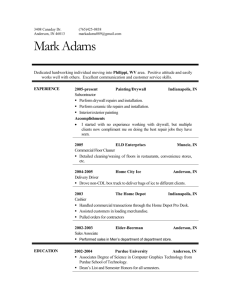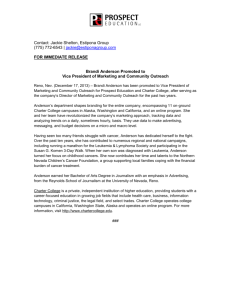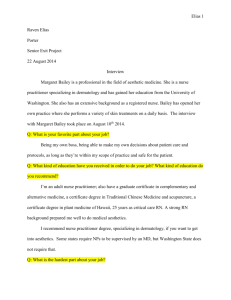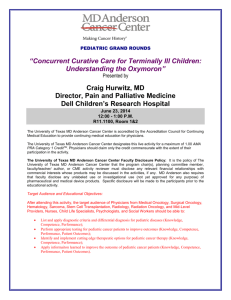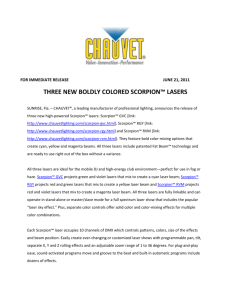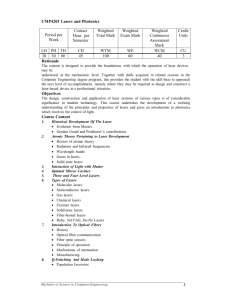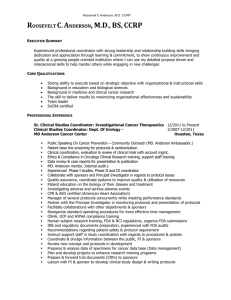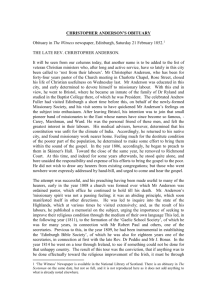R. ROX ANDERSON, MD Massachusetts General Hospital Dep
advertisement
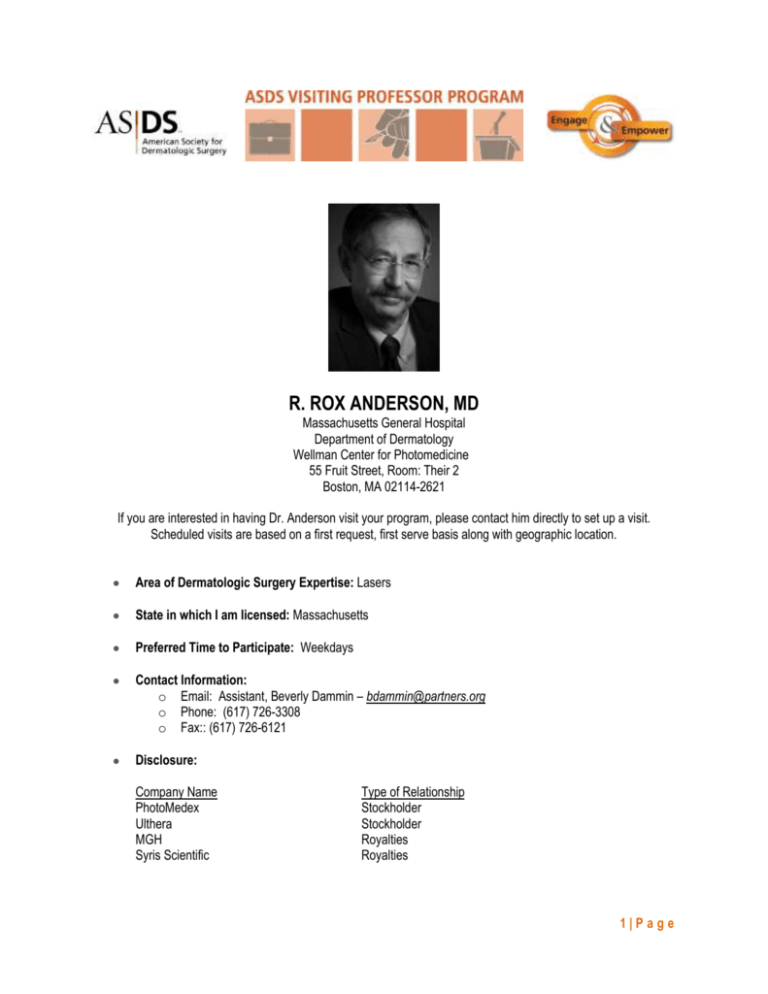
R. ROX ANDERSON, MD Massachusetts General Hospital Department of Dermatology Wellman Center for Photomedicine 55 Fruit Street, Room: Their 2 Boston, MA 02114-2621 If you are interested in having Dr. Anderson visit your program, please contact him directly to set up a visit. Scheduled visits are based on a first request, first serve basis along with geographic location. Area of Dermatologic Surgery Expertise: Lasers State in which I am licensed: Massachusetts Preferred Time to Participate: Weekdays Contact Information: o Email: Assistant, Beverly Dammin – bdammin@partners.org o Phone: (617) 726-3308 o Fax:: (617) 726-6121 Disclosure: Company Name PhotoMedex Ulthera MGH Syris Scientific Type of Relationship Stockholder Stockholder Royalties Royalties 1|Page Mini-CV: see below Curriculum Vitae R. ROX ANDERSON, MD Rox Anderson, MD is a Professor in Dermatology at Harvard Medical School, and Director of the Wellman Center for Photomedicine at Massachusetts General Hospital. This is the world’s largest laboratory dedicated to biomedical uses of light. He is also an Adjunct Professor at M.I.T., where he teaches graduate courses in the Division of Health Sciences and Technology. Dr. Anderson conceived and co-developed the concept of microscopic target-selective laser therapy. Lasers now in widespread use for pediatric portwine stains, pigmented lesions, tattoos and hair removal came from this work. He recently co-invented fractional laser treatment, the first use of laser microbeams for skin treatment. He also contributed to development of lasers for lithotripsy, cardiovascular and eye diseases. Based on the natural entity of neonatal cold-induced fat necrosis, he recently led the development of selective cryolipolysis, which uses cold cycles to preferentially remove adipose tissue. He co-invented the confocal laser scanning microscope for human skin imaging. Dr. Anderson has authored over 300 research publications related to skin optics, human photobiology, lasers and skin diseases. 2|Page


